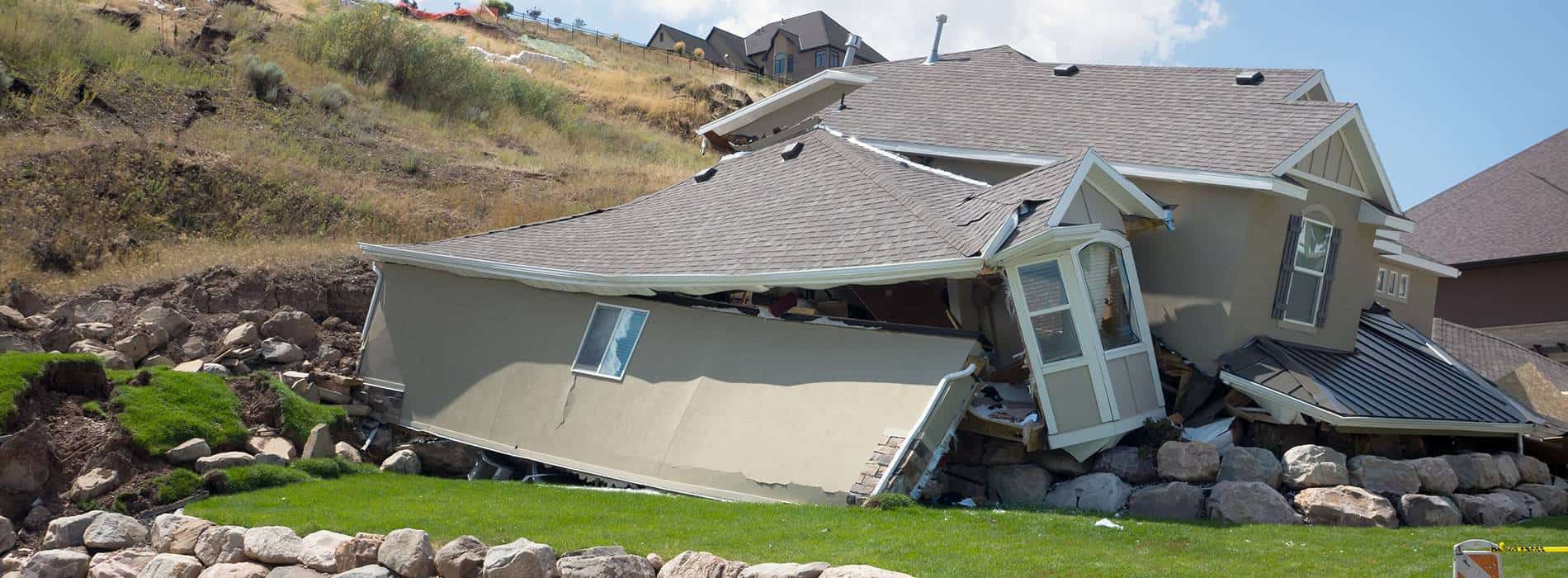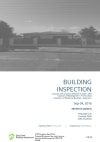Property Inspections
Why Engage East Coast Building Inspections?
East Coast Building Inspections pair an experienced Licensed Pre Purchase Building Inspector ( Travis Reeves ) & Pest Inspector ( Paul Lee ) to develop a comprehensive property & pest inspection, both inspectors have been in their fields for over 20 years & have over 50 years experience between them, so you are getting two experienced inspectors on site together that gives you peace of mind. We strongly recommend that buyers carry out a combined Building and Pest Inspection to provide you with full insight into a property.
We are leading the building inspection industry, using advanced technology that we have had designed. Our reports are graphic rich and easy to read format. Free of fine print and jargon showing you minor & major defects but also providing the positive. Our reports have no limits to how many photos, or information that can be sent in the report.
The inspector can send your report within minutes directly form the property in a single click. Without waiting days to receive your report that you cannot understand. This will give you the competitive edge of having your report quicker than other prospective buyers trying to buy the same property.
Having this system ensures that all of our reports are quality assured this will leave you satisfied and give you the competitive advantage. Our building inspection reports comply with the Australian Standard (AS 4349.1) & will make you aware of the property’s condition and any minor & major defects.
Our inspections generally take 2 to 4 hours for an average house going over the property with a fine tooth comb documenting the smallest defect so you know every defect when buying your property with no surprises.
What we inspect & the contents of the report
We inspect all accessible parts of the property these include:
All Internal Rooms & Areas:
- Ceilings, Cornice, Scotia, Quad, Walls
- Paint Condition, Wall Paper
- Kitchen, Ensuite, Bathrooms, Laundry Construction
- Wet Areas & Shower Recess Under Water Test
- Floors & Floor Coverings
- Blinds, Curtains, Shutters
- Windows, Fly Screens
- Door, Door Jamb, Door Furniture
- Architraves, Skirting
- Smoke Detectors, Services, Ventilation
- Electrical, Plumbing Installation
- Safety Hazards
Roof Void Area:
- All Construction Members to The Roof Construction
- Roof Structure, Roof Trusses, Common, Hip & Jack Rafters
- Collar Ties, Scissor Beams, Purlins & Struts, Hanging Beams
- Water Penetration & Damage, Termite Damage
- Sarking, Flashing, Insulation
- Skylights, Whirlybirds & Ventilation
- Electrical, Plumbing, Phone & Data Installation
- Safety Hazards
Exterior:
- Eaves, Scotia/ quad/ storm moulding
- Exterior cladding/ cement sheeting finish,
- Exterior brick/ render finish,
- Paint condition
- Cover strips, Timber trims
- Lintels, Windows aluminium/ timber, Window trims, Window sills
- Doors aluminium/ timber, Door Trims, Door sills
- Weep holes, Vents
- Decks, Verandas, Patios, Front & Rear Landings
- Safety Hazards
Roof Exterior:
- Ridges, Roof Covering, Roof Screws & Nails
- Valleys, Flashing, Lead Flashing
- Chimney/ Flu, Drain Waste Vents
- Sky Lights, Whirlybirds
- Barge Capping, Bargeboards, Fascia
- Gutters, Down pipes, Drainage
- Painting
- Safety Hazards
Sub floor
- Flooring, Bearers & Joists
- Water Penetration from Wet Areas
- Ant capping, Piers, Brick walls
- Vents & Ventilation
- Drainage & Foundation Coverings
- Electrical, Plumbing, Phone & Data Installation
- Safety Hazards
Site:
- Garage, Carport, Outbuildings, Garden Shed
- Separate Laundry & Toilet
- Driveways, Paths, Steps
- Retaining walls, Fencing, Gates
- Surface Water Drainage, Storm Water Run-Off
- Services, Letter box, Clothesline, Trees & Branches
- Safety Hazards
Other details
Our reports also include the following information:
- Your name
- The address of the property to be inspected
- Reason for the inspection
- The start & finish time of the inspection
- The date of inspection
- The scope of the inspection
- A list of any area or item that wasn’t inspected, the reasons why it wasn’t inspected and if necessary, a recommendation for further investigation
- A summary of the overall condition of the property (considering its age and type) and any major & minor faults founds in the property
- A list of any significant problems that need fixing
- If necessary, a recommendation that a further inspection or assessment be carried out by a suitably accredited specialist (eg. pest inspector, electricity supply authority, water supply authority, structural engineer, geotechnical engineer, surveyor or solicitor).
What is a pre-purchase property inspection report?
A building inspection is just one check you can get done before buying a property.
Sometimes referred to as a ‘standard property report’, a pre–purchase property inspection report (or referred to as a ‘building inspection report’) is a written account of the property’s condition.
Our building reports will include minor & significant building defects or problems such as rising damp, mould, inadequate drainage, leaking bathrooms, movement in the walls (cracking), structural defects, faulty roofs, safety hazards. It is usually carried out before you exchange sale contracts so you can identify problems which, if left unchecked, could prove costly to repair.
Just as you wouldn’t buy a car without taking it for a test drive you shouldn’t buy a house without a pre-purchase building inspection. Inspections can help you avoid extensive unforeseen repairs which can turn your dream home into a nightmare and can even help you determine how much you are willing to pay for a home.
A building inspection report is different to a ‘pest inspection report’. While a building inspection report should identify any visual damage that may have been caused by termites, it usually won’t include termites or other timber destroying pests. You may choose to get a separate pest inspection report done before you buy a property. We strongly recommend that buyers carry out a combined Building and Pest Inspection to provide you with full insight into a property.
Why do I need a building inspection report?
Benefits of getting a building inspection report done before buying a property are:
Knowing as much as you can about the condition of a property before you buy will help you avoid problems and extra costs down the track. Besides inspecting the property, yourself, you can also arrange a property inspection report – commonly known as a building inspection. This information explains what you need to know about property inspections.
- knowing in advance what the problems are
- using the information to negotiate a lower price for the property ie. you may have to pay to repair some of the problems
- gaining specialist advice about any major problems and how they will affect the property over time.
Always use a suitably qualified person (such as a licensed builder, carpenter a surveyor or an architect) to provide a professional building inspection report of the property you are thinking of buying. These professionals should see through any cosmetic improvements such as, covering up faults that might otherwise be missed by an untrained eye.
A professional will ensure that the format and content of the report complies with the Australian Standard (AS 4349.1). Ensure that the person you choose has adequate insurance cover, particularly for professional indemnity.
We recommend personal inspections before you get a building inspection
You should personally inspect a property that you are interested in buying. We recommend to take someone with you to gain another perspective.
Property viewings usually last 15 minutes to an half an hour which is not much time to inspect if its a lemon, so use the time wisely on top of getting a general feel for the property, do the following checks:
- Inspect that windows and doors can open easily and don’t get caught in their frames if they are getting stuck this may mean structural issues or the property may need maintenance.
- Inspect for rising damp or mould along skirting boards, walls and ceilings if there is this may mean moisture issues.
- Inspect carpets around wet areas & adjacent rooms wet areas if there is mould or dampness this could mean the water proofing is compromised.
- Try all taps and check how long it takes for hot water to come through you might find the water pipes have water hammer.
- Flush the toilet to check for a running cistern.
- Turn light switches on & off.
- Look at the condition of the roof, guttering and drain pipes if in poor condition it would mean that there are drainage issues.
- Inspect exterior & interior walls for major cracks and other defects.
- All ways do 2 or 3 personal inspections to get a feel for the property.
Be wary of any Building & Pest inspection report offered by the agent or the seller
Real estate agents will recommend a particular building & pest inspector to a prospective buyer sometimes a list of three is given out. How did these building inspectors “qualify” to get on the “approved” list? Are the agents recommending a thorough non-bias inspector or are the agents recommending someone who will help protect their potential commission?
If a real estate agent tells you that you cannot use an inspector of your choosing, or insists that you use one of their “recommended” or “approved” inspectors, you should seek Department Of Fair Trading.
As prospective home buyers you must keep in mind that real estate agents who receive a commission from the property seller, are working in the best interest of their client, (the seller). A real estate agent who tries to get you to use a building or pest inspector of the agent’s choice is trying to control the building inspector selection process.
Our advice is for potential purchasers to do their own due diligence and to get their own property inspection report. The independence of a report is only guaranteed if it is obtained specifically by and for the buyer.
Visit our pricing page for costs, or contact us for more information.



